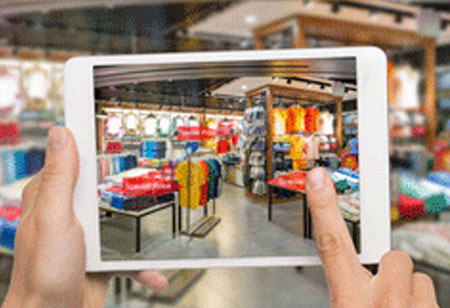THANK YOU FOR SUBSCRIBING
AR Adding an Immersive Touch to Advertising
Advanced machine learning (ML) algorithms are generally used to analyze user behavior and interest in case of digital ads. AR ads offer an even better option with its advanced hyperlocal advertising.

By
Apac CIOOutlook | Friday, August 30, 2019
Stay ahead of the industry with exclusive feature stories on the top companies, expert insights and the latest news delivered straight to your inbox. Subscribe today.
With highly interactive and immersive experience, AR allows marketers and advertisers to connect with consumers via innovative approaches.
FREMONT, CA: Augmented reality (AR) is a buzzword which has been primarily associated with the gaming industry until now. However, the term is steadily encompassing various industries ranging from healthcare, construction, and education. The advertising industry is among the recent ones to see the potential of AR and its ability to change the way digital advertising functions. The inherent nature of AR makes it suitable to make advertising interactive while allowing marketers and advertisers to connect with the consumers via innovative approaches. What exactly has drawn the interest of marketers in AR? Here are some insights:
Emotional Connect
AR advertisements are interactive and immersive that allows marketers to develop a certain emotional connect with their customers. In contrast with the traditional images or banners, AR advertisements are more lifelike that lets consumers can see and interact. The interactive AR ads often make the consumers feel as if they are playing an engaging video game. It creates an impact on consumers psychology, which encourages them to make purchases. Moreover, emotional connect is also crucial for brand awareness as people want to associate with brands that they had a positive experience with. AR ads offer a perfect setup for building a company’s reputation.
Cost Cutting in Ads
Despite digital ads being highly popular, traditional prints ads are still carrying a significant market share. Print magazines with a catchy image advertise various goods and services. However, print advertisements are expensive, which may not be affordable for everyone. AR advertising presents a more affordable and more immersive experience as compared to print magazines. Even the price for VR ad varies, but it counters the issue with its customizability and flexibility, offering the marketers with a relevant solution.
There are two primary types of AR available:
• Marker-Based AR ads need a marker that consumers can scan using their smartphone cameras and make the virtual content alive.
• Location-Based AR ads overly virtual content depending on a user’s location using GPS. They don’t need a marker, which means that there’s no need for a print image.
Boosting Sales
AR has more to offer to the advertising industry than just promoting services and offers. With virtual try-on, AR provides various opportunities for advertisers and marketers to boost their sales volumes. For instance, a customer comes across a conventional advertisement of a ring and is unsure whether it will suit him. In such a case, VR try-on will enable him to virtually try on several rings and choose the one that suits him best.
Enhancing Hyperlocal Advertising
Advanced machine learning (ML) algorithms are generally used to analyze user behavior and interest in case of digital ads. AR ads offer an even better option with its advanced hyperlocal advertising. In contrast to the conventional hyperlocal ads, AR hyperlocal ads are highly immersive as it can show objects directly on a smartphone’s screen. Thus, the consumers are not just made aware of places that might interest them but are guided there too. Thus AI ads are offering game-changing opportunities for business owners and can significantly enhance their numbers.
Check This Out: Top Ad Management Companies





